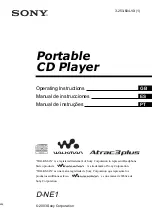
Chapter 3
Tag Configuration
3-12
©
National Instruments Corporation
Connection
You associate a tag with its real-world I/O point by assigning it a Server,
I/O Group, and Item in the Connection tab of the Tag Configuration
dialog box, shown in Figure 3-5. If an I/O Group does not already exist for
the server, you must create one before you can select or enter an item for
the tag. The I/O Group is user-defined and provides you with a place to
configure the rate and deadband for an item. For IAK and VI-based servers,
you select the device as part of the I/O group configuration. For OPC
servers, the I/O group conforms to an OPC group.
When you edit a tag, use the ring inputs to assign values to the tag. Use the
Create…, Edit…, and Delete buttons to configure I/O Groups and Items.
For more information about device servers, see Chapter 8,
.
Table 3-1.
General Configuration Attributes
Attribute
Applies to
Data Types
Description
Tag Name
all
Determines the name of the tag you are configuring. Always refer
to a tag by its name. Tag names are not case sensitive and can
include any combination of printable characters (including
space) with the exception of “/” (forward slash) and “\”
(backslash).
Tag Group
all
Determines the group name to use for this tag. You can use
groups to assist in alarm management and reporting and to help
organize tags in an application.
Tag
Description
all
Provides a description of the tag.
Maximum
Length
string,
bit array
Determines the maximum number of bits in the bit array.
The length is between 1 and 32 for bit array tags. String tags
can be of any length.
















































